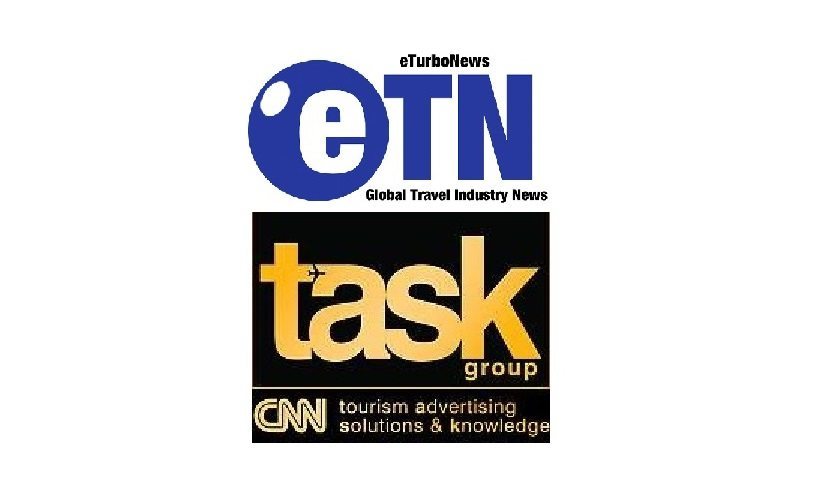

Chinese New Year: Global celebration of culture, customs and customers
“Kung Hei Fat Choy!”
Across the globe over the period of February 16th to March 02nd, millions upon millions are seeing and saying these words with rapid follow-up of wishing one and all well in this, the Year of the Dog! Airports, art galleries, storefronts large and small, hotels near and far, restaurants, rail cars, car dealerships and candy stores, engagement points across the globe will be thoughtfully decorated in red, reaching out to the world’s Chinese population celebrating this most festive time of year.
As it began, world leaders were extending their personal greetings alongside the collective voice of the global community, watching in respectful awe as the largest human migration began. In 2018, an estimated 385 million Chinese are expected to travel to be with their loved ones, venturing out across the country, with an estimated 6.5 million travelling overseas. The scale of the movement is truly remarkable, masterful logistics managing to move massive numbers, with their masses of gifts all lovingly packed in red, across often vast distances, faster and smoother than one could ever imagine.
FROM CUSTOMS TO CUSTOMERS
As part of the Chinese New Year, Golden Week is truly a time of breathtaking cultural beauty. While regional traditions and customs may vary, the age-old spirit of the occasion remains the same. Whether young or old, rich or poor, urban or rural, hip of homely, grandparents or grandbabies, this is a time of collective honoring of the past, celebration of the present, and hope for the future.
Over the past decade, the growing appeal of Chinese citizens celebrating the weeklong Lunar New Year period by travelling internationally has been growing in appreciation by destinations. With Chinese travelers becoming bolder in their desire to capture moments through high level of activity with both their cameras and their credit cards, the value of Chinese New Year has risen exponentially. As recently published in the South China Morning Post:
“According to a report published jointly by Ctrip, the mainland’s largest online travel agency, and China Tourism Academy, a research institution under the China National Tourism Administration, the number of outbound tourists during the Lunar New Year holiday is expected to rise by 5.7 per cent from 2017 to hit an all-time high of 6.5 million this year. Just a decade ago, Lunar New Year – a festival steeped in tradition – represented high season for businesses such as restaurants, shops, garment makers and food processors. Those days are now history.”
Shopping remains a significant activity among those celebrating the festive season, both overseas and at home. China National Tourism Administration reported that within China, the Lunar New Year of 2017, with its predicted 344 million domestic travelers, saw an estimated per capita spend of Yuan 3500 (USD$ 560). The tourism sector alone is believed to have topped Yuan 423 Billion (USD$ 67 Billion) nationwide in revenues. Estimates for 2018 are in the range of Yuan 476 Billion ($75 Billion).
Unsurprisingly, spend by overseas travelers is significantly higher. Throughout the year, Chinese travelers are already recognized as the top spending tourists, spending on average three times that of other international travelers.
According to the UNWTO, the Chinese outbound market remains a force of global tourism growth and inspiration, defining the pace and direction of tourism momentum with its “ten years of double-digit growth in spending, and after rising to the top of the ranking in 2012. Expenditure by Chinese travelers grew by 12% in 2016 to reach US$ 261 billion. The number of outbound travelers rose by 6% to reach 135 million in 2016.”
On the receiving end, global destinations are rolling out the red carpet to red envelope carrying travelers from China during the Lunar New Year. With an estimated 6.5 million making their way across the globe, especially destinations such as the US, UK, UAE as well as Asian regional tourism centers, Chinese New Year has come to represent big business, providing a valuable post western Christmas/New Year boost to tourism numbers, both arrivals and spend.
CELEBRATING SINCERELY
One global tourist capital that has seen the value of Chinese New Year millions of times over is London. With VisitBritain estimating almost 350,000 Chinese visitors from China expected in the UK, London’s Evening Standard newswire is spreading the word on behalf of London’s finest retail district.
“Bosses at the New West End Company, which represents traders in and around Oxford Street, Regent Street and Bond Street, estimate that £32 million will be spent in the two weeks from Friday alone by Chinese tourists, and that the total in central London this year will easily pass the £400 million high set in 2017.”
Importantly, New West End Company echoes the greater yield of Chinese visitors who are reported to spend “an average of £1,972, which is more than three times the average for foreign tourists.”
Still, for all of the value that Chinese New Year brings to London, to any global city, the values of tourism must never be overlooked: hospitality, community, understanding, sharing, caring. Which is why keeping the spirit of celebration at the heart of city invitations to Chinese travelers looking to enjoy this festive, family time of year….and shop…is vital.
Championed by the Mayor of London, Sadiq Khan, London has been standing tall in 2018 as a leading destination recognizing and respecting the Chinese New Year holiday wishes of its visitors – their culture and tradition – during this special time. Central to the city’s spirit of hospitality has been the Mayor ensuring that the red carpet reached beyond purely retail to all corners of the city, with Chinese New Year events across London showcasing and celebrating Chinese culture, cuisine, style and spirit. Official celebrations were given rightfully grandness of proportion and profile when hosted in the city’s iconic Trafalgar Square. China’s XINHUANEWS excitedly reported to its tens of millions strong audience: “London host(ed) on Sunday the largest Chinese New Year celebrations outside Asia, attracting tens of thousands of people heading to areas around Chinatown to share the joy. Festivities began with a two-hour long Grand Parade featuring the largest gathering of over 50 Chinese Dragon and Lion teams through the streets from Trafalgar Square, via West End before reaching its final destination Chinatown.”
The message to the world was clear: London celebrates the people of China across the city and across the world, Mayor Khan himself sharing:
“Chinese New Year is always a joyous time in the city’s cultural calendar. London is open to all people and all communities. That’s why I’m so proud of the Chinese New Year festivities here in the capital, which are the largest of their kind outside of China and entertain hundreds of thousands of Londoners from all communities, as well as visitors to our city.”
Red carpets alongside red envelopes.

Destination competitiveness through cooperation: Embracing challenges right next door
As a very busy 2017 for global Travel & Tourism now fades into the background, tourism leaders face the daunting task of resetting the counters for 2018. Little opportunity exists for a quiet exhale following year-end tourism high periods of activity. A new year means new targets, new expectations, and new competition.
Global Travel & Tourism (T&T) saw a remarkable performance in 2017, with international arrivals crossing the 1.3 billion mark reflecting a high of +7% growth as a result of strong recovery in regions suffering instability in previous years, the UNWTO’s recent announcement of the stats has many tourism leaders across the globe feeling a level of confidence not experienced for many years where growth was a consistent +4%. The sector continues to inspire the quest for discovery of people and places, which in turn is inspiring economies and societies looking to the sector as a source of sustained unity and opportunity.
Still, the year ahead is not without its challenges. With a number of milestone initiatives set to take place in the months ahead, be they new aviation and visa facilitation policies going into effect, megaevents ranging from the Olympic & Paralympic Games and the FIFA World Cup, to royal births and royal weddings going live, and iconic attractions opening their doors, 2018 promises to be a year of immense excitement.
COMPETITIVE NEIGHBOURHOODS
The excitement will not only be felt by travelers. It will also be felt by destinations, especially those looking at activity taking place in their neighborhood.
Such is the case in the increasingly active Middle East region, where T&T continues to be integrated into national and regional strategic visions as a vehicle for sustainable economic and social development, not to mention cultural and environmental protection.
One such destination is the emirate of Ras Al Khaimah (RAK) in the UAE. With very active tourism destinations on its doorstep, namely Abu Dhabi and Dubai, RAK has found a firm position for itself in the eye of the competitive storm, much thanks to the tourism authority’s CEO since 2015, Haitham Mattar.
A hospitality professional at heart with almost three decades of front-line experience in hotel and destination management, Mattar views RAK’s competitors as a source of solid inspiration. Not an easy position to take when major events such as Abu Dhabi’s recent opening of the Louvre Museum Abu Dhabi, and Dubai’s rapidly approaching Expo 2020 can easily cause distraction from strategic decision making.
As stated by Mattar:
“Ras Al Khaimah is indeed located in a very competitive region, however, I believe that because we are a unique destination that offers nature-based adventure activities and attractions that are distinct in the UAE and the region. Everything we do is focused on how we compliment the other Emirates and add value to the UAU as a whole, particularly with our 45-minute proximity from Dubai International Airport.”
A complementary approach allows for a more steady, sensible and sustainable approach to growth. It’s all about perspective. And positioning. Mattar continues:
“Our strategy aims to bring one million tourists to Ras Al Khaimah by the end of 2018, focusing on three key tourist segments beyond the traditional leisure market seeking sun and sand. These segments are active adventurers, cultural explorers and luxury indulgence and wellness seekers. Our ongoing efforts will remain targeted on growing awareness of Ras Al Khaimah’s hidden gems both locally and internationally, focusing on its untouched and beautiful natural resources, just 45 minutes away from the modern life offering in Dubai and other Emirates.”
Clearly the aspirations of RAK’s neighbors, and investment into same, are being adopted by RAK as levers to accelerate growth. As explained by Mattar:
“Let’s take Abu Dhabi as an example. After the opening of the Louvre the Emirate reported an increase of 17.6% in its hotel occupancy. This week we’ll officially open the world’s longest zipline, Jebel Jais Flight, and it will be followed with other unique projects in the mountains including our Viewing Deck Park. We expect these products to help us deliver significant tourism growth and strengthen our position as the adventure capital of the region. Such unique mega-events that have the ability to create a bucket list effect internationally and when combined with the breadth of offer in a destination really drive appeal for the next generation of travelers.”
Taking a regionally holistic, inclusive and innately grateful approach to destination leadership allows for win:win development for both travelers and destination(s) alike.
“Ras Al Khaimah prides itself on being the outdoor adventure capital of the Middle East. Looking ahead to Expo 2020, Dubai is expecting more than 25 million visitors during the event, 70% of which will be from outside of the UAE. Given the proximity of Ras Al Khaimah to Dubai and the complimentary nature of the destination’s we hope to capitalize on this influx of tourists by focusing on the breadth of experience in our Emirate to encourage dual center visitors. We have a clear understanding on what the Ras Al Khaimah identity and unique brand stands for, and this is at the heart of everything that we do. We don’t try to compete with others, we listen carefully to what our travelers want and we work on facilitating their needs and catering to them all.”
Competition through cooperation. A winning strategy for travelers, destinations, and greater global sector development.
by Anita Mendiratta for CNN TASK GROUP
